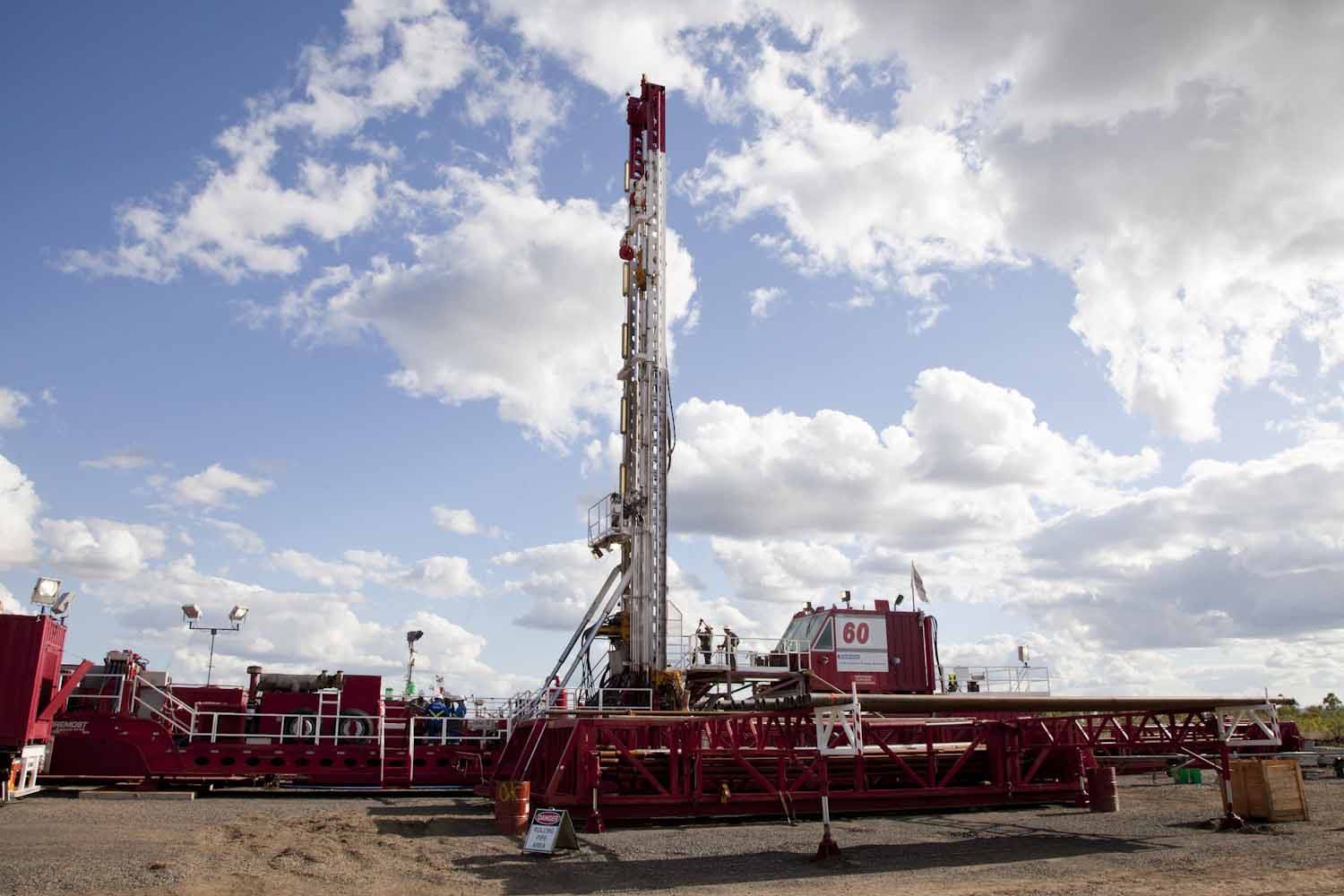Queensland faces the partial shut-down of a third of its barely decade-old $84 billion LNG industry by the middle of next decade due to a gas supply shortage, together with diversions to the domestic market.
This would cut output to four LNG production trains from the current six trains built on Curtis Island off Gladstone by three project owners.
Underpinning the production noose is an emerging forward reliance for feedstock on gas reserve estimates that could fall well below delivery expectations, according to a new report by EnergyQuest.
All three projects rely on coal seam gas (CSG) sourced from the Bowen and Surat Basins – a less conventional gas source than feeds Australia’s successful west coast LNG industry.
The report’s findings show that there is now doubt of sufficient Queensland CSG gas being available for the three Gladstone plants to ever achieve full-scale production.
The plants operated at only an average 82% capacity in calendar 2018.
Crunch time is expected by 2025 and will be exacerbated by potential political pressure for Gladstone LNG operators to divert gas to the domestic market.
Any Gladstone plant shut-down is not expected to dampen Queensland’s new status as a major global LNG supplier, but its LNG potential has been summed up as “now is as good as it will get”.
The findings above have emerged from EnergyQuest’s most intensive scrutiny yet of the Queensland LNG sector’s exploration, production, supply, price and market risk outlook.
The work was undertaken over the past year by Adelaide-based and nationally respected independent energy consultancy, EnergyQuest, led by CEO, Dr Graeme Bethune.
EnergyQuest adopted a ‘ground up’ approach to intensely analyse corporate and government drilling data from ~10,000 Queensland CSG wells, Reserves bookings for ~60 Authorities to Prospect (ATP), 120 Production Licences (PL) and production data since 2005 for 120 PLs.
The Queensland concerns form part of a broader 130-page EnergyQuest report titled East Coast Gas Outlook to 2036 to be released in full next week. The findings will also be presented to industry peers at the Australian Gas Outlook Conference in Sydney.
“The Queensland CSG story is globally unprecedented, going in under 20 years from producing virtually nothing to nearly 1,400 petajoules (PJ) in 2018.
“The three Australian east coast projects are all successfully producing, with China the biggest market (70% of 2018 Queensland exports) followed by Korea (16%) and Japan (9%). However, two projects, the Shell-operated QCLNG and the Santos-operated GLNG, are operating well below capacity due to insufficient gas supply and diversions to the domestic market. In 2018, QCLNG averaged 87% capacity utilisation and GLNG only 65%.
“Unfortunately, there are serious headwinds coming and the outlook is less rosy as the industry over-reached by building three projects of six trains.
“Queensland will remain a significant LNG exporter, one of the world’s largest, but with more like four trains fully utilised, reducing medium-term exports to around 17 million tonnes per annum (Mtpa).”
Dr Bethune says the three plants have a combined nameplate capacity of 25.3 Mtpa but there is simply insufficient gas to run the plants at capacity and also meet supply the needs of the domestic market.
“Building six LNG trains in Queensland using CSG was bold and visionary but ultimately a bridge too far,” Dr Bethune said.
“We have to recognise that the capacity of the east coast’s CSG resource base to feed multiple LNG trains was largely untried. The emerging and critical shortages are resulting from the fact the CSG LNG projects were sanctioned on ambitious estimates of Proved and Probable (2P) reserves, not Proven (1P) reserves that underpin conventional LNG projects.
“The emerging reserves risk is already evident. According to estimates published by the Queensland Government, Queensland 2P CSG reserves peaked in June 2015 at 42,733 PJ. Three years later, by June 2018, 2P reserves were down to 35,074 PJ, a drop of 7,660 PJ after only 3,570 PJ of production. Over 4,000 PJ of 2P reserves have had to be revised down.
“Rather than Queensland exports ultimately rising to 25 Mtpa, current export levels are likely to be as good as it gets and maintaining these will require drilling an ultimate total addition of more than 18,000 wells.”
EnergyQuest noted Santos GLNG had already negotiated down its offtake contracts from 7.2 Mtpa to 6.0 Mtpa and is yet to reach even this level.
“With dwindling production from southern gas fields, the political pressure on the LNG producers to divert gas to the domestic market is likely to intensify,” Dr Bethune said.
“Queensland CSG supplied 25% of east coast demand in 2018 and this is likely to increase.
“However, there are limits to how much gas can be diverted domestically. There are infrastructure constraints on the volumes of Queensland gas that can be diverted to the southern states. There are also the constraints of international LNG contracts.”
Dr Bethune said EnergyQuest’s permit-by-permit assessment of Queensland’s 2P CSG reserves categorised them into Most Certain, Less Certain and Least Certain.
“Only 56% of these booked 2P reserves have demonstrated any commercial productivity (Most Certain). This means 44% are in licenced areas which have not demonstrated commerciality, reinforcing the growing forward uncertainty attached to CSG reserves.
“In the past year, more than 3,000 PJ of these 2P reserves, and approximately 5,000 PJ of Best Estimate Contingent (2C) Resources, have been written off. Arrow Energy’s Surat acreage is the major potential source of uncontracted 2P reserves, but 80% of this is in the Least Certain category.
“This is at a time the east coast LNG plants are operating below full capacity, compared with over 100% of nameplate performance at west coast LNG plants.
“Our new production forecasts suggest a growing gap between Queensland-based CSG demand (domestic and export) from the middle of next decade, with stresses on meeting domestic peak winter demand as early as 2023. While there is some scope to increase indigenous supply through exploration, it generally takes a long time and involves significant exploration risks. The scope for doing so is also limited by exploration restrictions in New South Wales and Victoria.”



